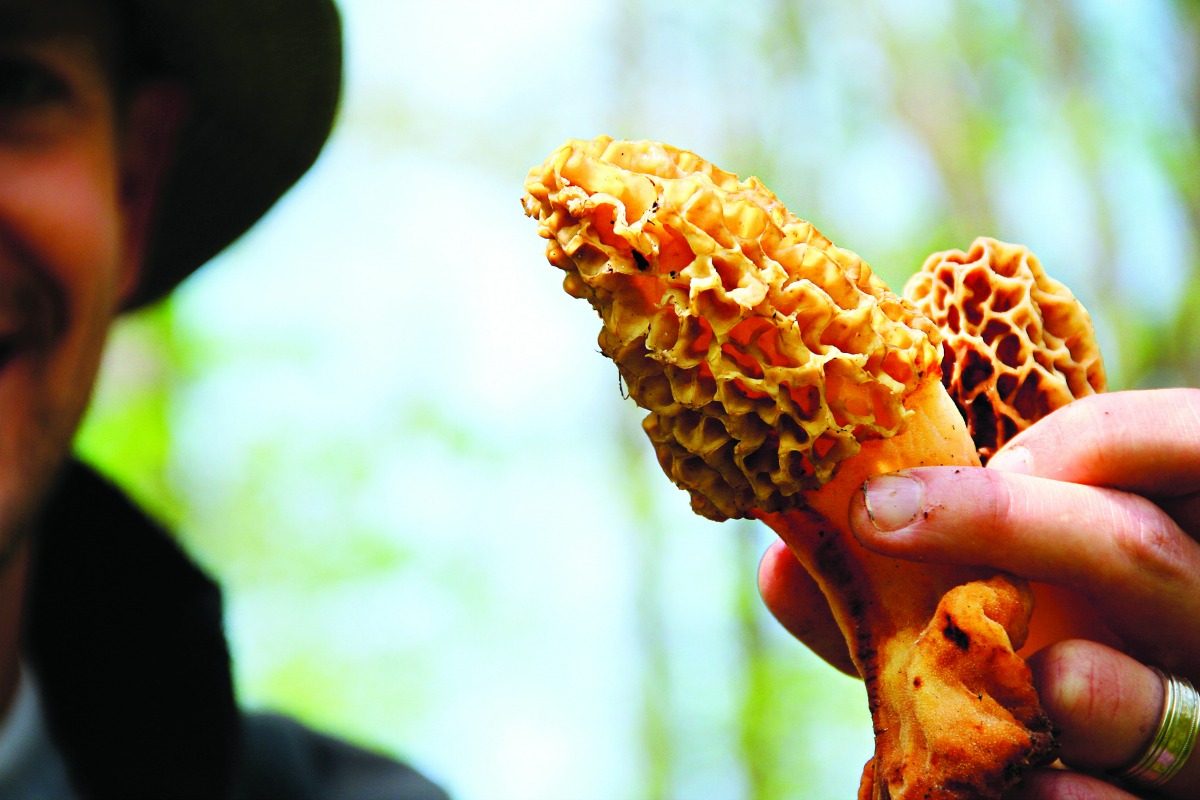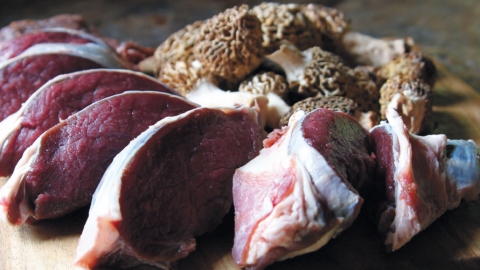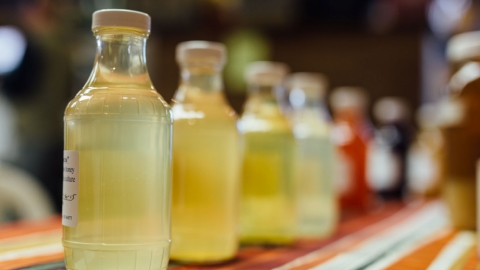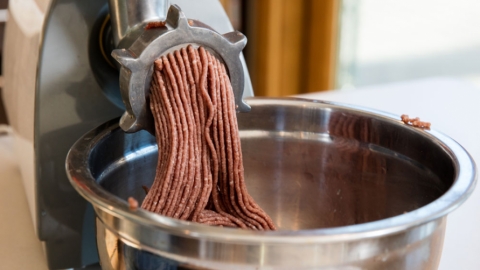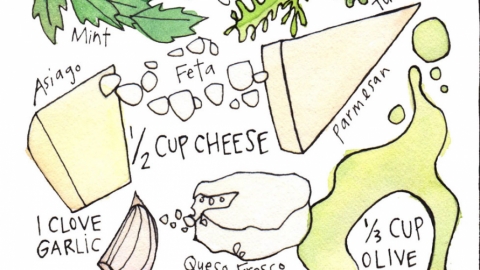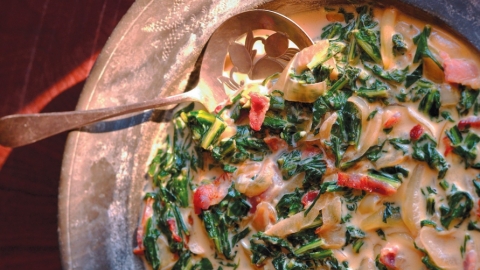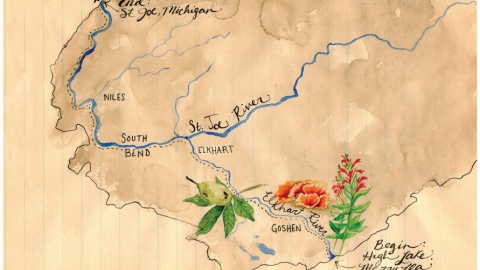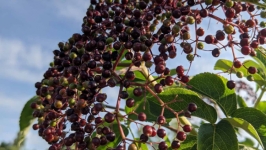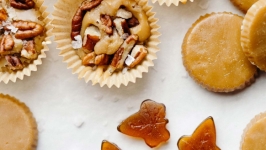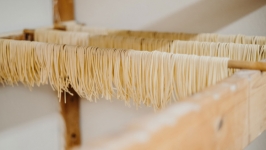From the Good Earth: Foraging 101
Raised in Southern Indiana with family members who gardened, tended fruit and nut trees and harvested all sorts of things, including rose hips and dandelions for wine and morels for Sunday breakfast, I was a bit of a forager and seasonal wild eater by upbringing. But foraging, a trendy topic in the food world, is much more than walking up to a mulberry tree and picking berries.
Modern foragers are reintroducing many forgotten (or never tasted) foods to chefs and diners eager to eat seasonally. And they are looking for ways to reintroduce the plants of an earlier time into areas that have suffered damage or been invaded by encroaching species introduced over time. Eating wild harks back to trial and error processes that resulted in humans finding safely edible plants and mushrooms, taking enough to survive and leaving enough to grow next season and beyond. This common, crucial wisdom faded from the collective consciousness as food production became industrialized and people lost connection with the land.
But for the fortunate few, like Michiana residents Paul Steury and Eric Lester, foraging is a way of life. Both grew up enjoying wild foods, learning in-depth foraging skills from family members. They continue their studies and learning and eat as local as humanly possible. Since they also pass along their knowledge and skills, I was a ready student. Paul suggested meeting at Fernwood Botanical Gardens in Buchanan, Michigan, and Eric invited me to his home outside of New Buffalo, Michigan. I learned invaluable lessons even though we didn’t harvest anything.
The Basics
To cram for my conversations with Paul and Eric, I purchased The Wild Table: Seasonal Foraged Food and Recipes, a beautiful oversize book, part text, part cookbook. It lists 37 wild foods that appear east of the Mississippi River. However, this attempt to impress my teachers with existing knowledge fell short. There is no point in looking in Michiana for some things listed in the book. For example, Blewit mushrooms and huitlacoche, an ugly but delicious fungus that grows on corn, are not prevalent here.
However, others not making the book’s list—chicken of the woods mushrooms, pawpaws, sweet cicely, cattails, garlic mustard and autumn olive plants—are abundant. First lesson: “The map is not the territory.” While general lists of available edibles are helpful, it is important to have the benefit of on-the-ground knowledge to avoid the frustration of looking for the nonexistent and to gain insights into the best tasty options available in a particular place.
Paul easily dispelled another wrong assumption of mine: that foraging was done here only in the spring and summer. As we walked around the parking lot of the botanical garden in almost December, he pointed out numerous edibles growing. Reaching into a nondescript clump of what appeared to me to be weeds, he picked one and offered me a stem to taste. “The leaves are not so tasty, but the stems are like candy,” he noted.
The plant was sweet cecily and had a distinctly and delightfully anise flavor. Observing the small stem size I thought it must take a huge amount to cook with. Not necessarily. “A single large stem of wild cicily is enough to season a whole fish,” Eric later explained. Second lesson: Things aren’t always what they seem—there is food out there year-round and wild foods can be small and mighty.
In a culture accustomed to eating whatever we want, whenever we want it, no matter where it comes from, waiting for wild foods to ripen can seem painful. Yet, aside from reducing the carbon footprint of our eating and producing amazing flavor, waiting for local delicacies has other real benefits. Eric recounted how his childhood impatience for mulberries resulted in serious medical complications after he ate unripe ones containing alkaloids and terpenes that temporarily impacted his central nervous system. “That scared me and taught me an important lesson,” he said. Third lesson: Patience is more than a virtue.
Foraging requires a deep understanding of wild edibles through all seasons because, although most are not harmful when ripe, their composition changes and what seems merely unripe or bad tasting can be dangerous. I will never eat an unripe mulberry on my walks. Fourth lesson: Natural is not automatically safe.
First-Time Foraging
I asked Paul and Eric what novice foragers could look for in spring. After running through a lengthy list of possibilities, two favorites floated to the top: morels and ramps (wild leeks, pictured at right). Although that Chickweed Pesto was tempting, these two ingredients are more familiar to cook with and more easily and safely identified by new foragers. Typically appearing in late April through early May, depending on the exact location and conditions, they are prized by chefs and other food lovers, and optimal harvesting spots are often protected like Fort Knox! While this may seem to be an over-reaction, the threat to wild foods from over-harvesting is real, and restraint is required. Fifth lesson: More is not better.
Foragers need to harvest sustainably, protecting the location where they harvest and practicing restraint and proper technique. Paul provided an example with morels. “The technique involves cutting or breaking the mushroom off above the ground, not pulling it out by the “root.” It is crucial to keep the part underground healthy and protected so that it continues to produce.” One rule of thumb says to harvest only 10% of what you find. But what if everyone did that? A more sustainable practice is to not harvest an area already harvested. Never take the last few of anything and know about what you are harvesting to ensure that taking something now doesn’t jeopardize future growth.
Eric elaborated on harvesting ramps. “The plant has a deep stem under the bulbs. If you leave it and only take the bulbs, greens or flowers, the plant can regenerate. To harvest anything constantly you must propagate the crop.” He suggests that when harvesting ramps to pick from a different location every time and only from large colonies. Foragers can also move seed to new ranges as well as transplant bulbs. Warning not to over-forage small and sparse colonies, he suggested to “take just one leaf from each head.” Leaves are delicious and taking them this way helps ensure annual harvests will be possible.
Numerous field guides, websites and even smartphone apps help foragers identify edible plants and mushrooms, but nothing beats live training with a knowledgeable human. The ability to get answers while looking directly at the plant or fungus in question virtually eliminates doubts and newbiemisidentified foods. Sixth lesson: Use all the resources at your disposal. Misidentified foods can be dangerous and cause anything from a tingling tongue or breathing distress to death.
Finally, Eric reminded me that foragers have company during hunting seasons and should wear appropriately visible clothing. He suggests, “To the extent possible, forage during the week and avoid the weekends when the largest number of hunters are out.” Seventh lesson: Foraging well means paying attention to everything from the shape of a leaf to who else is in the woods that day. Check with your state’s Department of Natural Resources for hunting season calendars.
In Closing …
Why forage? I had my reasons— not least of all saving on the food budget and surprising my friends with tasty finds. Paul and Eric broadened my perspective with more comprehensive reasons encompassing nutrition, enjoyment and a deep appreciation for the connection to nature that occurs.
- Foraged food can be nutritious. For example, purslane is a plant that most people consider a nuisance weed yet it has high levels of omega-3 fatty acids, vitamins A and C, calcium and iron. (Paul)
- Foraging gives people an opportunity to “go beyond recipes” and stretch their creativity by experimenting with what they find. (Eric)
- It can be intergenerational fun. Children’s small hands (supervised, of course) are well suited for harvesting certain things. (Paul)
- When foraging, people’s defenses drop and they are excited by nature. Everything is new again. (Eric)
- Foraging takes you into the natural world and helps you understand your place in it. (Paul and Eric)
Long before foraging was trendy, people like Paul and Eric practiced it with respect and joy, keeping the practice alive and enthusiastically sharing their knowledge, hoping that people would see its benefits and make the connection between the world around them and life itself. My lessons with them built on what I already knew and promise to turn future wanders in the woods into hunts for some tasty wild edibles. No matter where you are, finding, preparing and eating wild foods is a lifelong learning adventure with innumerable lessons about truly local taste.
Recipe: Paul Steury's Garlic Mustard Pesto
Making this dish helps remove an invasive plant while whipping up a wonderful meal.
Ingredients:
½ cup olive oil
A large handful of garlic mustard (Alliaria petiolata)
1 cup sunflower seeds
½ cup finely grated Parmesan cheese
Handful of sweet cicely
Throw the garlic mustard, sweet cicely, sunflower seeds and olive oil into a blender. Add Parmesan cheese, serve with pasta or rice or other whole grain.
Harvesting garlic mustard: This plant is an exotic invasive, so contrary to the information above about sustainable harvesting, you should take out the entire plant including the roots early in the season before it has a chance to flower.
Young first leaves are best for pesto (and for salads or as a steamed green). Use only the leaves for this recipe. Do not leave or compost the roots—they can re-establish themselves if left on the ground! (Look for more information at http://www.wildmanstevebrill.com/Plants.Folder/Garlic%20Mustard.html
Foraging Resources
Websites:
wildmanstevebrill.com/body.html: Wildman Steve Brill provides information on wild food. Learn about edible and medicinal wild plants and mushrooms, nature and ecology.
RogersMushrooms.com: Roger Phillips aims to be the greatest online pictorial and information resource for mycologists worldwide. It is part of Rogers Plants Ltd., a company committed to creating the ultimate reference work for all the major plant groups and other areas of natural history. Roger Phillips also makes information available on YouTube at www.youtube. com/user/RogersMushrooms.
theforagerpress.com: A dual-purpose website that offers information about foraging as well as books on the subject.
Books:
A Field Guide to Edible Wild Plants: Eastern and Central North America by Peterson Field Guides (Houghton Mifflin, 1999)
Edible Wild Plants: An Introduction to Familiar North American Species by James Kavanagh, Raymond Long (Waterford Press, 2001)
The Forager’s Harvest: A Guide to Identifying, Harvesting and Preparing Edible Wild Plants by Samuel Thayer (Forager Press, 2010)
Smartphone Apps:
Steve Brill helps get you started with a Wild Foods Lite app covering 20 different plants and flowers and including recipes. Browse by photo, search by name or filter by season, type (edible, medicinal or poison) or habitat. Other apps are also available.
Tips for Foragers
- Start slowly. The number of edible, inedible and just plain dangerous plants and fungi can seem overwhelming. Choose one or two things to learn about and look for. Only move on when you can confidently and accurately identify them throughout their seasons.
- Don’t blame Mother Nature. Even expert foragers experience disappointment when what is supposed to be “in season” according to a chart, isn’t. Use whatever nature gives you.
- Keep learning. Experienced foragers constantly double-check themselves. Take hands-on guided workshops, use field guides, go with more experienced foragers, get one or more smartphone apps— in short, be safe.
- Train your eyes. When you find a good spot for harvesting, look around. You may find an even better one, with tastier, more tender or more prolific amounts of whatever you’ve found. Plants need the right conditions to grow optimally and these can vary greatly within just a few feet.
- Use a breathable sack. This not only keeps your harvest fresh, but it allows mushroom spores or seeds to drop out along your walk, planting future harvests as you go.
- Use the buddy system. Two heads are better than one for assessing wild foods. And a buddy is a must when heading into new or difficult terrain.
- Location, location, location. It may seem obvious, but don’t forage in brownfield environments, where there is the possibility of chemicals (urban or agricultural), where you have questions about the water source that feeds the area or if you just question the area’s overall health


